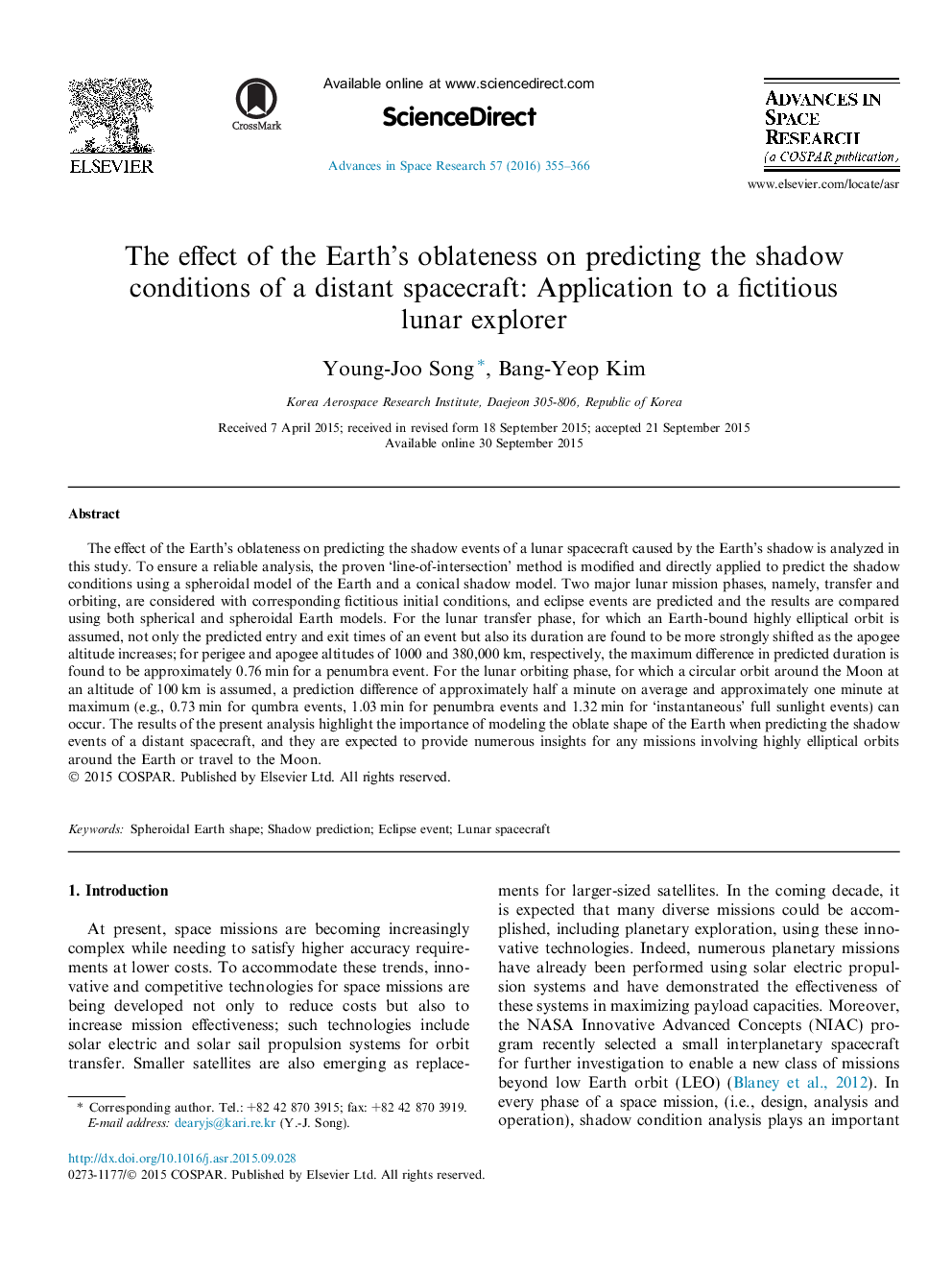| کد مقاله | کد نشریه | سال انتشار | مقاله انگلیسی | نسخه تمام متن |
|---|---|---|---|---|
| 1763960 | 1020031 | 2016 | 12 صفحه PDF | دانلود رایگان |
• The effect of the Earth’s oblateness on predicting the shadow events of a distant spacecraft is analyzed.
• Eclipse events are predicted and compared using both a spherical and a spheroidal Earth shape.
• The characteristics of the predicted events’ duration errors arising from the simplified Earth shape are discussed.
The effect of the Earth’s oblateness on predicting the shadow events of a lunar spacecraft caused by the Earth’s shadow is analyzed in this study. To ensure a reliable analysis, the proven ‘line-of-intersection’ method is modified and directly applied to predict the shadow conditions using a spheroidal model of the Earth and a conical shadow model. Two major lunar mission phases, namely, transfer and orbiting, are considered with corresponding fictitious initial conditions, and eclipse events are predicted and the results are compared using both spherical and spheroidal Earth models. For the lunar transfer phase, for which an Earth-bound highly elliptical orbit is assumed, not only the predicted entry and exit times of an event but also its duration are found to be more strongly shifted as the apogee altitude increases; for perigee and apogee altitudes of 1000 and 380,000 km, respectively, the maximum difference in predicted duration is found to be approximately 0.76 min for a penumbra event. For the lunar orbiting phase, for which a circular orbit around the Moon at an altitude of 100 km is assumed, a prediction difference of approximately half a minute on average and approximately one minute at maximum (e.g., 0.73 min for qumbra events, 1.03 min for penumbra events and 1.32 min for ‘instantaneous’ full sunlight events) can occur. The results of the present analysis highlight the importance of modeling the oblate shape of the Earth when predicting the shadow events of a distant spacecraft, and they are expected to provide numerous insights for any missions involving highly elliptical orbits around the Earth or travel to the Moon.
Journal: Advances in Space Research - Volume 57, Issue 1, 1 January 2016, Pages 355–366
